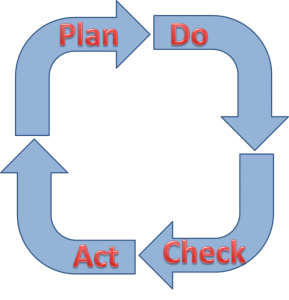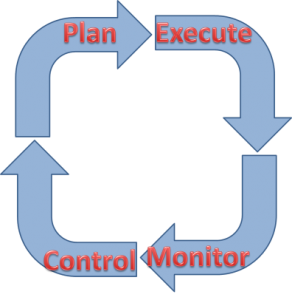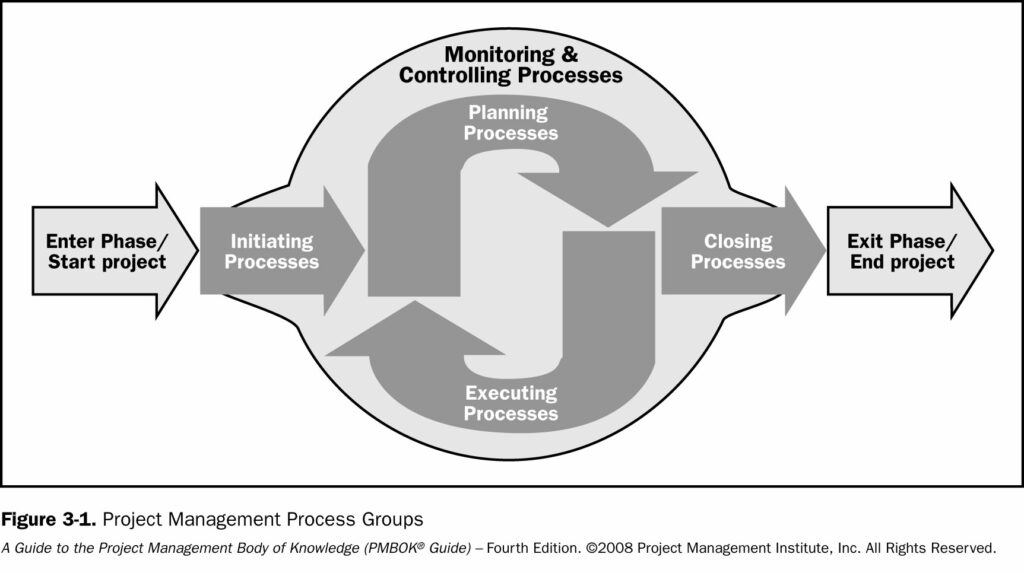Introduction
In today’s post, we will discuss an important concept that is at the heart of project management process and we will discuss its origin. It is recognized that the PMBOK® Guide (A Guide to the Project Management Body of Knowledge®), published by PMI, is quite popular and used globally. Many project management practitioners know its process groups by heart. On the other hands, not many know the origin, or the business model that led to the process groups, which is the P-D-C-A cycle.
The P-D-C-A Cycle
Many professionals in business, project management, and quality management, know the term P-D-C-A (Plan-Do-Check-Act). Some call it the Deming Circle, Deming Cycle, or Deming wheel. What most do not know that W. Edward Deming is not the original owner of this concept. The owner is Walter A. Shewhart but Deming made it famous and most credit him for this concept.
The P-D-C-A is an iterative four-step management method, which one use continuous improvement. In simple terms, this approach advises us to
- plan our work, whatever it is
- do the work according to the plan
- but since in real life things will not always go according to plan, we have to check our performance; we check by comparing actual to plan
- if there are deviations, or potential deviations, we need to act; take corrective or preventive actions.
Now, since this is a core concept for continual quality management, one uses the term cycle since this is continual process. Meaning, in any process, one will plan-do-check-act, and then we move on to plan-do-check-act again, and again, and again. This is the fundamental concept of continual improvement.
Project Management Process Groups
If you are not familiar the PMBOK® Guide process groups, we advise you to read a past article on this blog.
What is the relation between the process groups and PDCA?
The process groups are a form of PDCA, since we are dealing with project management processes, which are like any other business process. For any project, we have to plan, do, check, and act.
There are some differences. The first of differences is that PMI used different terminology:
- Kept the term Plan; as in the Planning process group
- Instead of Do, PMI uses Execute, representing the Executing process group
- Replaced Check with Monitor and Act with Control
- PMI also combined Monitor and Control into one process group called Monitoring and Controlling process group.
The second major difference was because projects are temporary – not ongoing. In other words, in the project management environment, there is a need to start and close, hence the Initiation and Closing process groups.
The following is how the PMBOK® Guide represents the interactions.


Not true. PDCA was never a factor in the development of the process groups.
So the similarities are just a coincidence?
The intention was not that PMBOK ‘copy paste’ the PDCA but the principle of the PDCA is universal and goes back 100 years. Therefore, the process groups, in our opinion, is a form of the PDCA